247 scholarly books by University Press of New England and 15
start with L
247 scholarly books by University Press of New England and 15
247 scholarly books by University Press of New England
15 start with L start with L
15 start with L start with L

The Language of Fiction
A Writer’s Stylebook
Brian Shawver
University Press of New England, 2013
Grand themes and complex plots are just the beginning of a great piece of fiction. Mastering the nuts and bolts of grammar and prose mechanics is also an essential part of becoming a literary artist. This indispensable guide, created just for writers of fiction, will show you how to take your writing to the next level by exploring the finer points of language. Funny, readable, and wise, this book explores the tools of the fiction writer’s trade, from verb tenses to pronouns to commas and beyond. Filled with examples from the best-seller lists of today and yesterday, it will help you consider the hows and whys of language, and how mastery of them can be used to achieve clarity and grace of expression in your own work. Here, you’ll find Encouragement and advice to face the big questions: Past or present tense? Comma or semicolon? Italic or roman? Should your dialogue be phonetically rendered, or follow standard rules of grammar? (And where does that pesky quotation mark go, again?) Warning signs of the betrayal of language, and ways to avoid it: Unwitting rhymes, repetition, redundancy, cliché, and the inevitable failure of vocabulary How-to (and how-not-to) examples: The grammatical “mistakes” of Charles Dickens; ambiguous pronoun usage by Nathaniel Hawthorne; the minefield of paragraph fragments found in one of today’s most successful authors.
[more]

Latin American Women and the Search for Social Justice
Francesca Miller
University Press of New England, 1991
A clear and detailed study of Latin American women’s history from the late nineteenth century to the present.
[more]

Laughing Lost in the Mountains
Poems of Wang Wei
Wei Wang
University Press of New England, 1992
Wang Wei was one of the most celebrated poets of China's Tang Dynasty (618-907). An influential painter and practitioner of Chan (Zen) Buddhism, many of his poems contain concise and evocative descriptions of nature whose elegant minimalism offers subtle expression of a transcendence from everyday life. While this purity of poetic expression is what Wang Wei's reputation is built upon, he lived a courtly life of highs and lows in a tumultuous era, suffering demotions and exile, imprisonment and rehabilitation, all of which are evidenced in his verse. Wang Wei's poems grapple with the trappings of worldly life and the quest for enlightenment, painting a complex picture of both his psyche and his Chan discipline. Laughing Lost in the Mountains includes translations of poems running the spectrum of Wang Wei's subjects, as well as an extensive introduction that sheds light on Wang Wei's craft, spirituality, and historical context.
[more]

Leaving Pico
Gaspar
University Press of New England, 2001

The Legacy of Fort William Henry
Resurrecting the Past
David R. Starbuck
University Press of New England, 2014
Fort William Henry, America’s early frontier fort at the southern end of Lake George, New York, was a flashpoint for conflict between the British and French empires in America. The fort is perhaps best known as the site of a massacre of British soldiers by Native Americans allied with the French that took place in 1757. Over the past decade, new and exciting archeological findings, in tandem with modern forensic methods, have changed our view of life at the fort prior to the massacre, by providing physical evidence of the role that Native Americans played on both sides of the conflict. Intertwining recent revelations with those of the past, Starbuck creates a lively narrative beginning with the earliest Native American settlement on Lake George. He pays special attention to the fort itself: its reconstruction in the 1950s, the major discoveries of the 1990s, and the archeological disclosures of the past few years. He further discusses the importance of forensic anthropology in uncovering the secrets of the past, reviews key artifacts discovered at the fort, and considers the relevance of Fort William Henry and its history in the twenty-first century. Three appendixes treat exhibits since the 1950s; foodways; and General Daniel Webb’s surrender letter of August 17, 1757.
[more]

The Life and Thought of Hans Jonas
Jewish Dimensions
Christian Wiese
University Press of New England, 2010
Hans Jonas (1903–1993) is one of the most important philosophers of the 20th century. Born in a German Jewish community in the Rhineland, Jonas’s mentors included Edmund Husserl, Martin Heidegger, and Rudolf Bultmann. The committed Zionist fled Germany in 1933 for Jerusalem, fought in the British Army against Hitler, and then left Israel for North America in 1949. Much of Jonas’s philosophy responds to contemporary historical and political challenges: mass society, totalitarianism, the Holocaust, “nuclearism,” environmental devastation (Chernobyl), and, later, the risks of genetic engineering. Wiese’s study examines how Jonas’s Jewish background influenced his intellectual development. Wiese shows how philosophical ethics and Jewish identity were two inseparable aspects of his thinking, with the fight against Nihilism as the most important link. Drawing on a wealth of unpublished material and exploring momentous encounters with major figures of 20th century life and letters like Gershom Scholem and Hannah Arendt, Wiese demonstrates how Jonas combined religious and philosophical elements in his thought, and offers new insights into the work of this eminent thinker.
[more]
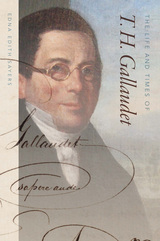
The Life and Times of T. H. Gallaudet
Edna Edith Sayers
University Press of New England, 2017
Edna Edith Sayers has written the definitive biography of T. H. Gallaudet (1787–1851), celebrated today as the founder of deaf education in America. Sayers traces Gallaudet’s work in the fields of deaf education, free common schools, literacy, teacher education and certification, and children’s books, while also examining his role in reactionary causes intended to uphold a white, Protestant nation thought to have existed in New England’s golden past. Gallaudet’s youthful social and political entanglements included involvement with Connecticut’s conservative, state-established Congregational Church, the Federalist Party, and the Counter-Enlightenment ideals of Yale (where he was a student). He later embraced anti-immigrant, anti-abolition, and anti-Catholic efforts, and supported the expatriation of free African-Americans to settlements on Africa’s west coast. As much a history of the paternalistic, bigoted, and class-conscious roots of a reform movement as a story of one man’s life, this landmark work will surprise and enlighten both the hearing and Deaf worlds.
[more]

Life in the Cold
An Introduction to Winter Ecology, fourth edition
Peter J. Marchand
University Press of New England, 2014
Peter J. Marchand’s Life in the Cold remains the one book that offers a comprehensive picture of the interactions of plants and animals—including humans—with their cold-weather environment. Focusing on the problems of “winter-active” organisms, Marchand illuminates the many challenges of sustaining life in places that demand extraordinary adaptations. The fourth edition of this classic text includes a new chapter on climate change and its effects on plants and animals wintering in the North.
[more]
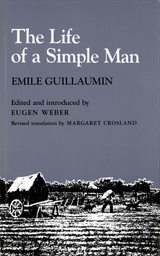
The Life of a Simple Man
Emile Guillaumin
University Press of New England, 1982
In order to “show the gents of Moulins, of Paris and elsewhere, just what a sharecropper’s life is like,” Emile Guillaumin, under the guise of fiction, wrote this story of “Tiennon,” a French peasant born fifty years before him in 1823. A peasant himself, Guillaumin was unique in that, after a few years of schooling, he continued to work his small farm in central France to the end of his life, reserving nights for study and writing. Guillaumin felt that the French peasant had been misrepresented in contemporary literature--either romanticized as in George Sand or depicted as a dumb victim of the forces of nature as in Zola--and wanted to correct the picture. The result is a moving first-person story that can be read as a fictional account, as well as the best kind of material for historians seeking to understand how nineteenth-century French peasants really lived.
[more]
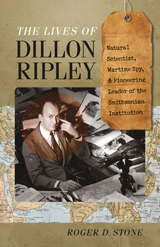
The Lives of Dillon Ripley
Natural Scientist, Wartime Spy, and Pioneering Leader of the Smithsonian Institution
Roger D. Stone
University Press of New England, 2017
A Yale-educated Renaissance man, S. Dillon Ripley was a “courtly, determined, hugely ambitious, energetic, funny, and colorful ornithologist, conservationist, and cultural standard-bearer” who led the Smithsonian Institution for twenty years, during its greatest period of growth. During his watch, from 1964 to 1984, the SI added eight new museums and seven new research centers and began publication of the Smithsonian magazine. It was Ripley’s vision that transformed “the nation’s attic” from a dusty archive to a vibrant educational and cultural institution, just as he had transformed Yale’s Peabody museum before it. Prior to his career at the SI, and running parallel with it for the rest of his life, was Ripley’s work as an ornithologist, begun in New Guinea in the 1930s, continued through his PhD from Harvard in 1943, and culminating in his landmark thirty-year project documenting the bird life of India. His lifelong passion for ornithology led him to positions of leadership in worldwide nature conservation. In the midst of these endeavors he was recruited in 1944 to the Office of Strategic Services, a Yalie club at the outset that became the forerunner of the modern CIA. Posted to Ceylon, he recruited and ran agents who reported from and infiltrated Japanese-held Southeast Asia. Roger D. Stone worked with Ripley on the board of the World Wildlife Fund. He has access to the Ripley family’s archives and photos, as well as to the voluminous archives at the Smithsonian and the National Archives, and to over forty hours of transcribed interviews, conducted with Ripley at the Smithsonian.
[more]

Living at the End of Time
Two Years in a Tiny House
John Hanson Mitchell
University Press of New England, 2014
In this second book in his Scratch Flat Chronicles, John Hanson Mitchell tells how he set out to recreate Henry David Thoreau’s two years at Walden Pond in a replica of Thoreau’s cabin. Mitchell lived off the grid, without running water or electricity, in a tiny house not half a mile from a major highway and in the shadow of a massive new computer company. Nevertheless, his contact with wildlife, the changing seasons, and the natural world equaled and even surpassed Thoreau’s. Hugely popular with the international community of Thoreau followers when it was first published, this book will now be essential reading for the growing community of people who are interested in living in a tiny house, fully experiencing the natural world, or finding self-sufficiency in an increasingly plugged-in society.
[more]
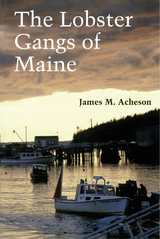
The Lobster Gangs of Maine
James M. Acheson
University Press of New England, 1988
James Acheson’s detailed account of lobstering in Maine quickly dispels notions that the lobstermen is the eastern version of the cowboy, struggling alone for survival against the elements. In reality, he writes, “the lobster fisherman is caught up in a thick and complex web of social relationships. Survival in the industry depends as much on the ability to manipulate social relationships as on technical skills.” Acheson replaces our romantic image of the lobsterman with descriptions of the highly territorial and hierarchical “harbor gangs,” daily and annual cycles of lobstering, intricacies of marketing the catch, and the challenge of managing a communal resource.
[more]

Louis I. Kahn’s Jewish Architecture
Mikveh Israel and the Midcentury American Synagogue
Susan G. Solomon
University Press of New England, 2009
In 1961, famed architect Louis I. Kahn (1901–1974) received a commission to design a new synagogue. His client was one of the oldest Sephardic Orthodox congregations in the United States: Philadelphia’s Mikveh Israel. Due to the loss of financial backing, Kahn’s plans were never realized. Nevertheless, the haunting and imaginative schemes for Mikveh Israel remain among Kahn’s most revered designs. Susan G. Solomon uses Kahn’s designs for Mikveh Israel as a lens through which to examine the transformation of the American synagogue from 1955 to 1970. She shows how Kahn wrestled with issues that challenged postwar Jewish institutions and evaluates his creative attempts to bridge modernism and Judaism. She argues that Kahn provided a fresh paradigm for synagogues, one that offered innovations in planning, decoration, and the incorporation of light and nature into building design.
[more]

Loving Her
Community-Building as Crime Control
Shockley
University Press of New England, 1997
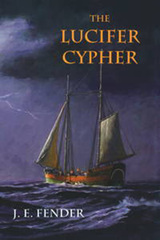
The Lucifer Cypher
J. E. Fender
University Press of New England, 2012
Geoffrey Frost, American sea captain and veteran of the China Trade, and Ming Tsun, his enigmatic mute friend, return in this latest installment of the highly literate and compelling saga of the American struggle for independence at sea. After a clash against well-armed British warships, Frost’s ship, the privateer Audacity, must be laid up for repairs. Frost, however, is not the kind of man to sit idle for long, and when a new secret weapon invented by David Bushnell comes to light, he recognizes a rare opportunity to strike hard at the complacent English. Commanding the prototype submarine Narwhal, Frost and the freed slave Darius set out to bring terror from below, all the while narrowly avoiding sinking and certain death in the cast iron tomb. J. E. Fender proves in this harrowing novel of power and suspense why he is quickly distinguishing himself as one of the eminent voices of American historical fiction.
[more]
READERS
Browse our collection.
PUBLISHERS
See BiblioVault's publisher services.
STUDENT SERVICES
Files for college accessibility offices.
UChicago Accessibility Resources
home | accessibility | search | about | contact us
BiblioVault ® 2001 - 2024
The University of Chicago Press









